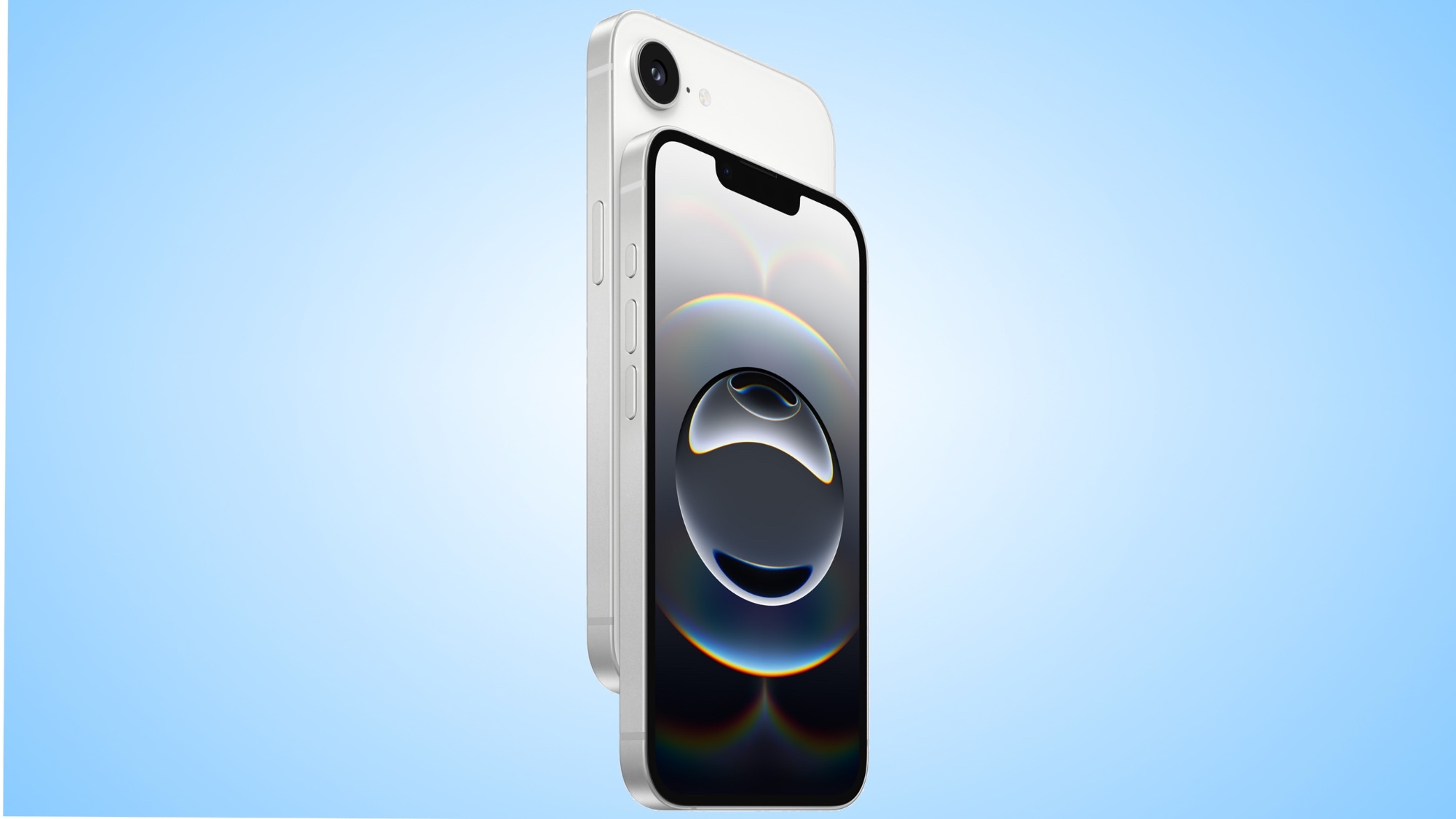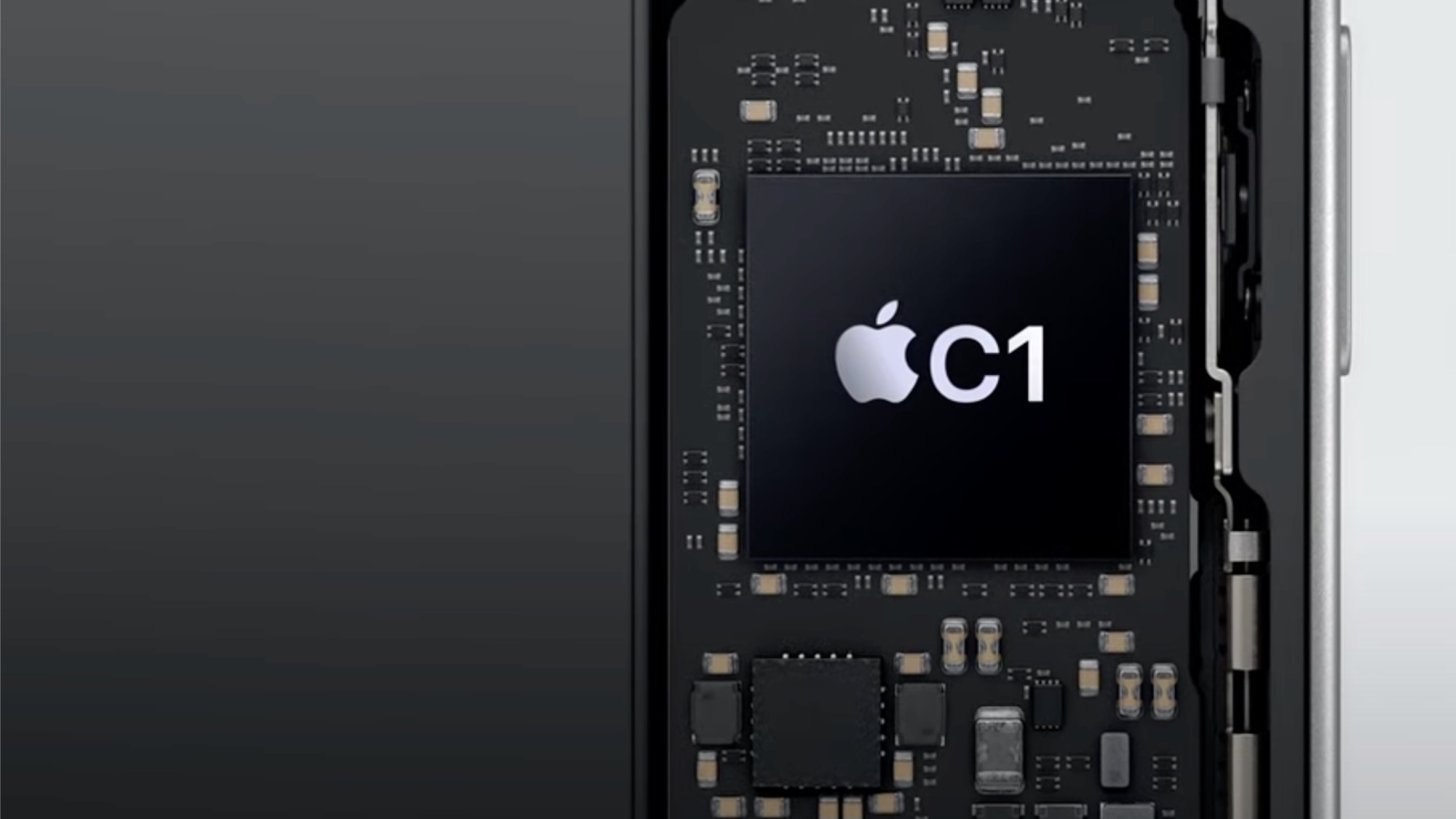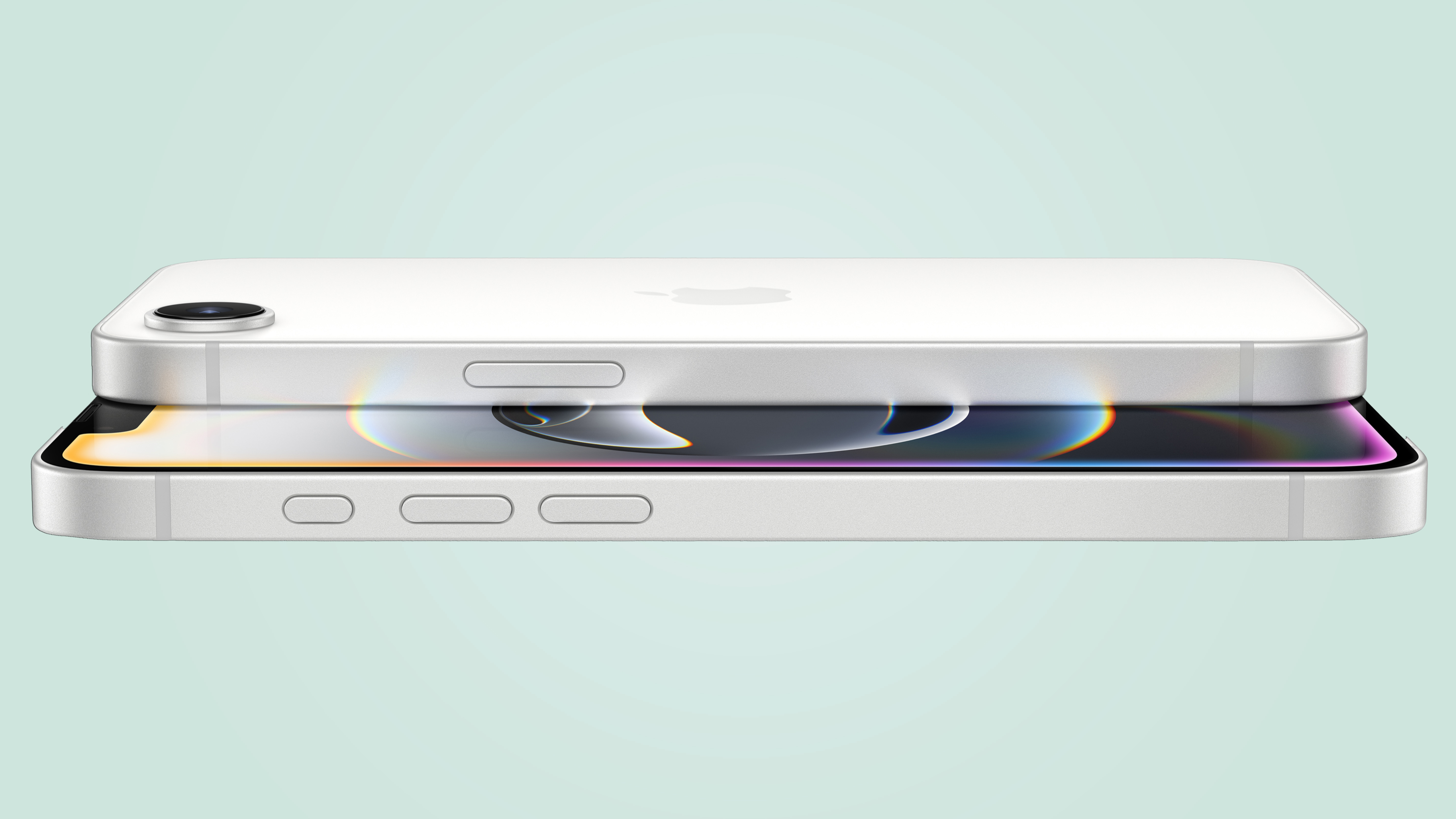iPhone 16e — Apple's new C1 modem could blow away Android phones
Why the new Apple C1 modem could be a game changer for battery life

The iPhone 16e launch frankly generated a lot of buzz because of what's not in this phone. You don't get MagSafe charging. Or the Dynamic Island. Or an ultrawide camera. Or Wi-Fi 7.
And those are all fair to bring up, especially since the iPhone 16e starts at $599. But you are also getting a lot for your money versus the previous iPhone SE 3. This includes a much larger 6.1-inch OLED display, Face ID, a sharper 48MP camera, an A18 chip and Apple Intelligence features.
But the most interesting new feature inside the iPhone 16e is actually exclusive to this phone, and it could blow away other mid-range phones like the upcoming Google Pixel 9a. I'm talking about Apple's new C1 modem, the company's first-ever homegrown modem in a smartphone.
What is the Apple C1 modem?

The C1 is the first cellular modem built by Apple and it's something that's been years in the making. It's a platform that consists of several components, including the baseband, an RF transceiver for the sub-6GHz band of 5G and the first 7nm transceiver in a smartphone.
The C1 platform also includes GPS capability and the ability to connect to Apple satellite features. And then there's the Apple software and firmware that ties everything together.
Apple didn't just develop the C1 to be less reliant on Qualcomm — it wanted a way do differentiate the iPhone 16e and exhibit more control over the experience it could deliver. And a very big focus is on power efficiency and battery life.
A leap forward in battery life
While the C1 should deliver strong 5G performance, Apple really zeroed in on using the least amount of energy while offering strong speeds. The company claims that the C1 is up to 25% more energy efficient than the iPhone 15.
| Row 0 - Cell 0 | Streaming Video Playback |
iPhone SE 3 | 10 hours |
iPhone 16e | 21 hours |
iPhone 16 | 18 hours |
This should translate to considerably longer battery life, as the modem tends to be one of the most energy-consuming things on a smartphone.
So how much battery life are we talking? Thanks to the C1 modem, a larger battery in the iPhone 16e and other optimizations, this device is rated for up to 21 hours of video playback when streamed. That's 3 hours more than the regular iPhone 16.
The regular iPhone SE 3 is rated for just 10 hours of streamed video playback, so we're talking about over double the battery life for the iPhone 16e.
In terms of our own testing at Tom's Guide, the iPhone SE 3 lasted just 9 hours and 5 minutes when surfing the web over 5G. The iPhone 16 endured for a much better 13 hours and 19 minutes.
On the Android side, the Pixel 8a lasted for 11:21, so the iPhone 16e could blow away that budget phone. Though it's worth keeping in mind that a new Pixel 9a is on the way.
So we expect the iPhone 16e to last even longer than the iPhone 16 and make our best phone battery life list.
What's missing
The iPhone 16e should offer generally good performance, but it's missing support for mmWave technology.
mmWave is generally available in larger cities, stadiums and airports, so it's a bummer you won't get the fastest possible throughput in all situations.
We'll be testing the iPhone 16e vs the iPhone 16 5G speeds in multiple locations to see what the performance delta actually is.
Outlook

The iPhone 16e is just the first phone with Apple's C1 modem, and I'm excited to see just how efficient it is when we do the Tom's Guide Battery Test.
If it winds up lasting as long on a charge as promised, the iPhone 16e could set a new standard for all mid-range phones in terms of endurance — including Android phones. Its real test, however, would be to beat the the 18 hours and 49 minutes clocked in by the OnePlus 13R.
I also would not be surprised if Apple went with the C1 on the rumored super slim iPhone 17 Air, though Apple is expected to stick with Qualcomm for the regular iPhone 17 and iPhone 17 Pro Max.
This would make sense because presumably the iPhone 17 Air will have a smaller battery, so Apple will need to make up for that with efficiencies elsewhere.
More from Tom's Guide
Sign up to get the BEST of Tom's Guide direct to your inbox.
Get instant access to breaking news, the hottest reviews, great deals and helpful tips.
Mark Spoonauer is the global editor in chief of Tom's Guide and has covered technology for over 20 years. In addition to overseeing the direction of Tom's Guide, Mark specializes in covering all things mobile, having reviewed dozens of smartphones and other gadgets. He has spoken at key industry events and appears regularly on TV to discuss the latest trends, including Cheddar, Fox Business and other outlets. Mark was previously editor in chief of Laptop Mag, and his work has appeared in Wired, Popular Science and Inc. Follow him on Twitter at @mspoonauer.
You must confirm your public display name before commenting
Please logout and then login again, you will then be prompted to enter your display name.

